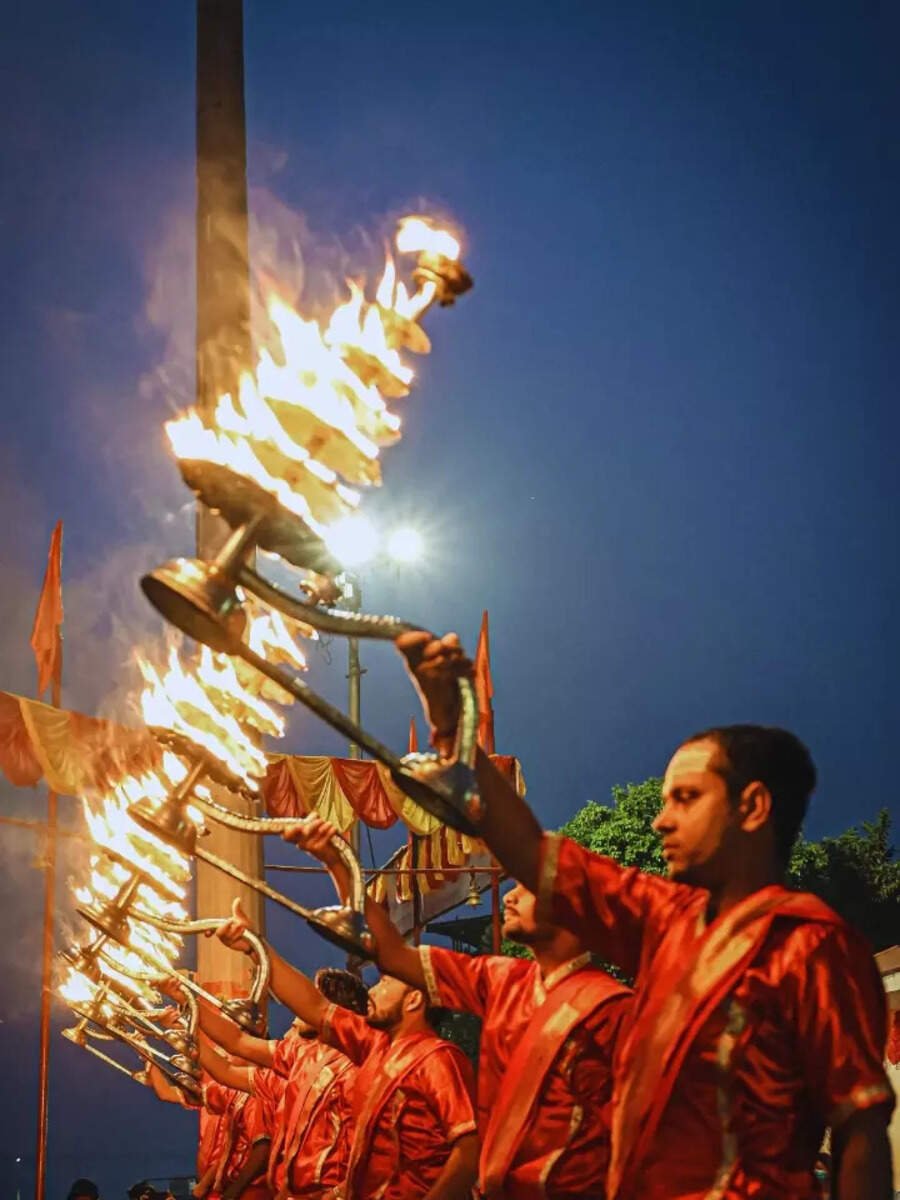Spiritual Travel
10 oldest temple towns in India for spiritual getaways – The Times of India

10 oldest temple towns in India for spiritual getaways The Times of India
Source link
Spiritual Travel
Lalibel booming tourism to its living rock‑hewn churches is transforming pilgrimage, surfacing preservation challenges and empowering communities across Ethiopia

Monday, August 4, 2025
Lalibela
It was indicated that eyes are now turning more intensely toward Lalibela in northern Ethiopia, where the interplay of ancient faith, medieval architecture, and modern pilgrimage is believed to be reshaping how sacred destinations are valued and marketed in today’s travel industry.
In observers’ views, the spiritual vitality and historical resonance of this site were thought to be redefining tourism’s stance toward places once considered static heritage. They reportedly pointed out that, unlike monuments no longer in active use, Lalibela continues to be a functioning religious centre, shepherded by a community of worshippers. They maintained that this ongoing sacred tradition was elevating the visitor experience from detached admiration to emotionally resonant engagement, cultural sensitivity, and meaningful human connection.
Critics and analysts mentioned that modern travellers, especially those influenced by experiential and cultural tourism trends, are increasingly dissatisfied with merely viewing relics. It was said they crave access to the narratives, ceremonies, and living practice embedded in places like Lalibela. Experts were cited asserting that this demand is prompting travel strategists to shift away from sterile, museum-style representation toward immersive, respectful storytelling.
They went on to note that such an evolution—forged at the intersection of heritage and spirituality—was pushing tour designers, cultural custodians, and heritage managers to adopt ethical storytelling principles and sustainable engagement practices. They added that it was no longer enough to safeguard stone; attention now needed to be paid to preserving living traditions, local craftsmanship, and daily spiritual practices that give the site its identity.
It was emphasized that marketing messages are increasingly weaving in themes such as authentic spirituality, cultural continuity, and artisan heritage. According to analysts, Lalibela has emerged as a model for heritage tourism that transcends passive observation: it invites visitors to participate, learn, and be emotionally stirred.
Sited Shifts the Travel Industry Observers Foresee
They reportedly affirmed that as sites like Lalibela gain wider recognition, certain travel industry trends are expected to intensify:
- Cultural and spiritual tourism is anticipated to take a central place in international travel strategies.
- Infrastructure development—roads, lodging, visitor amenities—around rural heritage sites is projected to expand.
- Tourists are said to increasingly favour small-group, slow-paced, immersive itineraries rather than mass-tourism blitzes.
Observers interpreted these as signs that tourism is moving away from fast consumption toward slower, more personalized, and emotionally resonant journeys.
How the Site Was Built and Persists
It was recounted that perched in Ethiopia’s elevated precincts, the rock-carved churches of Lalibela stand as extraordinary testimonies to devotion and craftsmanship. Commissioned in the 12th century by a visionary monarch, King Lalibela, the site comprises 11 churches and 2 chapels, each hewn entirely from single volcanic rock blocks.
They stated that the king’s aspiration was not merely symbolic: he intended to recreate a “New Jerusalem”, forging a spiritual counterpart in Ethiopia at a time when access to the true Jerusalem was limited. Observers noted that this was therefore a project of both religious symbolism and political significance.
They described the construction techniques as remarkable: first, trenches were carved—sometimes as deep as 15 meters—into the volcanic plateau. Then artisans painstakingly shaped churches from the central rock mass. Some structures were sunk into the ground, while others were carved into cliffs or bounded by dry moats, lending the impression of freestanding stone edifices.
They added that an intricate network of underground galleries, narrow corridors, shaded courtyards, and hermit cells connect the buildings, forming a spiritual labyrinth that is as architecturally evocative as it is devotional.
Crucially, they reaffirmed that Lalibela is not a site of abandoned ruins. It has served continuously as a place of prayer, chant, and celebration for over 800 years. Daily services and rituals, including significant festivals like Timkat and Genna, are still conducted within its sacred walls, making it a living sanctuary rather than a relic frozen in time.
Industry Reactions to Spiritual Tourism Demand
It was asserted that increasing demand for spiritually grounded travel is prompting the tourism industry to rethink offerings. They observed that tourists now seek more than photogenic settings—they want profound experiences. Lalibela was said to be recognized as delivering that depth.
They detailed how itineraries are being adapted: instead of quick sightseeing, guests are encouraged to stay several nights in the vicinity—dining with community members, taking part in prayers, and observing local traditions. This slow travel model prioritizes connection, authenticity, and reflection above consumption.
They reported that annual religious events at Lalibela are rapidly becoming global highlights. During such festivals, the churches teem with pilgrims, clergy, ritual, and song—creating a powerful experience that standard tours cannot replicate.
They mentioned that increased visitor volume is inspiring local development: improvements in transport, eco-conscious lodging, and visitor facilities are underway. When guided by local insight and cultural respect, these developments are expected to support economic uplift while preserving the site’s sacred character.
Global Effects on Travelers
Observers suggested that the influence of Lalibela extends far beyond Ethiopian borders. They argued that it’s reshaping global travelers’ understanding of heritage and travel, inspiring those who yearn for emotional resonance and spiritual insight.
Often called the “Eighth Wonder of the World,” Lalibela is attracting visitors seeking stories of human creativity, perseverance, and devotion. It was noted that the knowledge that these structures were carved by hand—stone by stone—over centuries adds layers of emotional depth to the journey.
They pointed out that the designation of Lalibela as a UNESCO World Heritage Site since 1978 has backed up its status as both culturally and spiritually significant. For many tourists, this label is more than symbolic—it’s a guarantee of authenticity and integrity.
It was underlined that what distinguishes Lalibela is the coexistence of physical monument and living faith. Visitors are not mere spectators; they are drawn into a centuries-old spiritual tradition. Observers claimed that Lalibela offers something rarely found: history that one can still touch, hear, and feel in an active religious context.
Observed Broader Cultural and Commercial Implications
They reiterated that the sacred resonance and cultural gravity of Lalibela are influencing how the tourism sector frames ancient sites. Contrasts were made with attractions that function solely as display pieces. Instead, Lalibela is upheld as a model of what heritage destinations might be: active, human-centered, and spiritually alive.
It was argued that this shift calls professionals in tourism and heritage preservation to:
- Place cultural empathy and community involvement at the heart of storytelling.
- Foster sustainable tourism that not only preserves stone but also prolongs living rituals, artisan practices, and worship.
- Highlight authentic spiritual continuity and local craftsmanship as key values in marketing culturally aware travel.
Analysts reported that travel messaging increasingly focuses not on what a place “looks like,” but on what it “feels like.” Lalibela, they said, gives travelers the chance to experience faith in motion.
Industry Trends Emerging
They forecast a set of trends expected to emerge globally:
- Spiritual and cultural tourism steadily assuming greater importance in destination planning.
- Significant investment in rural heritage infrastructure, such as access roads, lodging, and visitor centers.
- A shift in traveler behavior favoring smaller-group, reflective, slow-immersive travel rather than mass movement.
They indicated that such patterns mark a turning point: from superficial travel to journeys that are personal, culturally mindful, and emotionally meaningful.
Legacy and Global Significance
It was stated that built in the 12th century, the Lalibela complex embodies a fusion of architectural genius and unwavering religious intent. The 11 churches and two chapels, carved from single volcanic stones, echo a vision of New Jerusalem, meant to serve Ethiopian Christians during a time when pilgrimage to the original site was blocked.
They further noted that the site’s construction process—excavating 15-meter deep trenches and carving monolithic structures—speaks to both spiritual fervor and artistic mastery. The maze of tunnels, alleys, and monastic cells reinforces the sense that architecture at Lalibela was meant to inspire both awe and introspection.
Significantly, they reaffirmed that for more than eight centuries, this has not been an archaeological exhibit but a space of continuous worship. The rituals of today are intimately linked to the rituals of centuries past—giving the site a continuity that is rare on the global heritage map.
Final Reflections on Traveler Effects
They concluded that Lalibela’s combination of sacred function, human craftsmanship, and cultural authenticity is inspiring new paradigms in global tourism. Travelers increasingly seek depth, authenticity, and transformative experiences—and the site is being cited as a prime example.
They believed that Lalibela is influencing global tourism norms:
- Encouraging destinations to preserve not only physical structures but living traditions.
- Motivating stewardship that supports community well‑being alongside heritage protection.
- Reinforcing the idea that the most memorable travel experiences involve spiritual or emotional resonance, not just visual spectacle.
They suggested that Lalibela represents more than a destination—it embodies a journey of faith, time, and cultural immersion, offering travelers a profound encounter with history made alive.
Spiritual Travel
Rs 1,000 cr plan to develop Merta as Religious Tourism Hub:Diya
Spiritual Travel
4 Indian-Origin Senior Citizens Missing In US During Road Trip To Spiritual Site, Last Seen At Burger King

4 Indian-Origin Senior Citizens Missing In US During Road Trip To Spiritual Site, Last Seen At Burger King | X/@rtonline
New York: A family of four Indian-origin senior citizens from New York has gone missing under mysterious circumstances while travelling to a spiritual destination in West Virginia.
According to police, the group was last seen at a Burger King outlet in Pennsylvania on July 29, and their whereabouts remain unknown as the search operation intensifies.
Last Seen on CCTV, Vehicle Spotted on Interstate
The missing family members have been identified as Asha Divan (85), Kishore Divan (89), Shailesh Divan (86), and Gita Divan (84). They were travelling from Buffalo to Prabhupada’s Palace of Gold in Marshall County, West Virginia, in a 2009 lime green Toyota Camry with New York licence plate EKW2611.
Surveillance footage from the Burger King shows two members of the group entering the restaurant, and their last known credit card transaction was traced to the same location. Shortly after, a Pennsylvania State Police licence plate reader detected the vehicle heading southbound on Interstate 79 at 2:45 pm on Tuesday, officials confirmed.
“The family was headed to Pittsburgh and then on to Moundsville, West Virginia,” Marshall County Sheriff Mike Dougherty told NDTV, adding that while investigators have “a few leads,” there has been no contact or confirmed sighting since.
Search Widens, Community Appeals for Help
Law enforcement teams from Marshall and Ohio counties in West Virginia have been searching local roads for any sign of the vehicle. Helicopters are being deployed to aid in the search effort, and the vehicle details have been entered into the National Crime Information Center database.
The Council of Heritage and Arts of India (CHAI), a nonprofit organisation based in Williamsville, has also raised awareness. “Two couples who were travelling are currently missing, and we’re all deeply concerned,” CHAI President Sibu Nair said, as quoted by NDTV.
Authorities are also attempting to trace the group’s cell phone signals and have urged the public to report any information. The Marshall County Sheriff’s Office can be reached at 304-843-5422.
-

 Brand Stories2 weeks ago
Brand Stories2 weeks agoBloom Hotels: A Modern Vision of Hospitality Redefining Travel
-

 Brand Stories1 week ago
Brand Stories1 week agoCheQin.ai sets a new standard for hotel booking with its AI capabilities: empowering travellers to bargain, choose the best, and book with clarity.
-

 Destinations & Things To Do2 weeks ago
Destinations & Things To Do2 weeks agoUntouched Destinations: Stunning Hidden Gems You Must Visit
-

 Destinations & Things To Do1 week ago
Destinations & Things To Do1 week agoThis Hidden Beach in India Glows at Night-But Only in One Secret Season
-

 AI in Travel2 weeks ago
AI in Travel2 weeks agoAI Travel Revolution: Must-Have Guide to the Best Experience
-

 Brand Stories1 month ago
Brand Stories1 month agoVoice AI Startup ElevenLabs Plans to Add Hubs Around the World
-

 Brand Stories3 weeks ago
Brand Stories3 weeks agoHow Elon Musk’s rogue Grok chatbot became a cautionary AI tale
-

 Asia Travel Pulse1 month ago
Asia Travel Pulse1 month agoLooking For Adventure In Asia? Here Are 7 Epic Destinations You Need To Experience At Least Once – Zee News
-

 AI in Travel1 month ago
AI in Travel1 month ago‘Will AI take my job?’ A trip to a Beijing fortune-telling bar to see what lies ahead | China
-

 Brand Stories2 weeks ago
Brand Stories2 weeks agoContactless Hospitality: Why Remote Management Technology Is Key to Seamless Guest Experiences


You must be logged in to post a comment Login